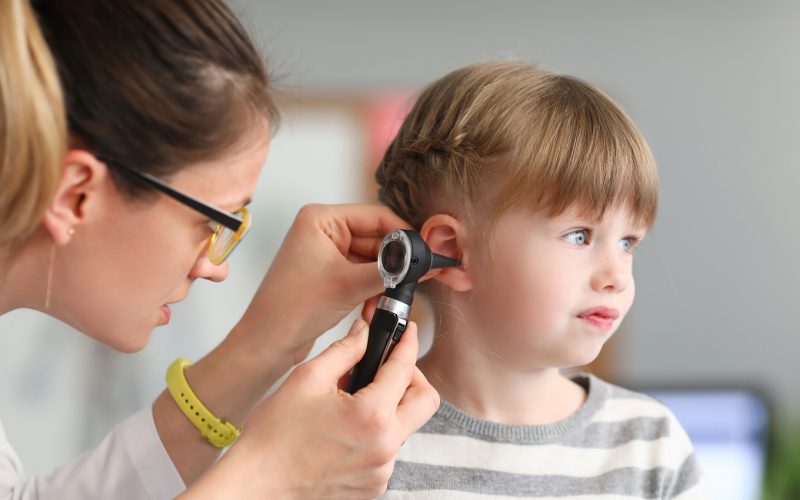The incidence of middle ear infections in children declined remarkedly during the COVID-19 pandemic, a pattern also seen other infectious diseases. In addition, the most dominant pathogens in children with middle ear infection and ear discharge are Streptococcus pneumoniae and Hemophilus influenzae, concluded Saskia Hullegie (UMC Utrecht) in her PhD thesis.
Acute otitis media (AOM) is an infection of the middle ear with effusion and signs of an acute infection (pain, fever). It is one of the most common childhood infections and a major cause of visiting a general practitioner (GP) and prescription of antibiotics. The higher incidence in children as compared to adults is mostly explained by immaturity of the immune system and the Eustachian tube, along with other factors. However, detailed information on the characteristics of AOM and ear discharge (AOMd) and its management in primary care is relatively scarce. The main aim of the PhD thesis by Saskia Hullegie, MD (Department of General Practice & Nursing Science, UMC Utrecht) was to gain insight into the epidemiology, microbiology and management of AOMd by Dutch GPs.
Saskia Hullegie reported that GP visits for AOM dropped in children by more than 60 percent (from 73.8 to 27.1 per 1000 children each year) during the COVID-19 pandemic. Because prescription patterns for antibiotics did not change, these findings suggest a true decline, most probably as a consequence of infection control measures during the pandemic. In an exploratory study, she also showed that the incidence of AOM in adults were stable over 2015-2018 with 5.3 episodes per 1,000 adults each year. In adults, incidence of AOM declined with increasing age and oral antibiotics were prescribed in almost half of the AOM episodes en topical antibiotics in one-fith of the episodes.).
Saskia reported that Streptococcus pneumoniae and Haemophilus influenzae, followed by Staphylococcus aureus and Streptococcus pyogenes are globally the most common bacteria present in the ear discharge of children with AOMd. Antimicrobial resistance (AMR) data are sparse (mainly limited to S. pneumoniae), without evidence of a clear shift of bacterial species and AMR patterns.
A small clinical trial in children (interrupted due to drug supply issues and later terminated early due to slow recruitment due to the COVID-19 pandemic) could not demonstrate non-inferiority of antibiotic-corticosteroid eardrops as compared to oral antibiotics in children with AOMd. However, the results suggested that oral antibiotics might work better for symptom relief and might shorten the duration of ear discharge. Finally, the investigators observed that topical and oral antibiotics had similar effects on gut bacteria and the number of AMR genes in the stool of children with AOMd.
Saskia Hullegie, MD (1991, Enschede) defended her PhD thesis on September 18, 2024 at Utrecht University. The title of her thesis was “Incidence, microbiology and management of acute otitis media and ear discharge in primary care”. Supervisors were prof. Roger Damoiseaux, MD PhD (Department of General Practice & Nursing Science, UMC Utrecht) and prof. Anne Schilder, MD PhD (University College London, United Kingdom). Co-supervisors were Roderick Venekamp, MD PhD and Thijs van Dongen, MD PhD (both Department of General Practice & Nursing Science, UMC Utrecht). Saskia Hullegie is now completing her GP training at UMC Utrecht and aims to combine her work as a GP with research and education.

